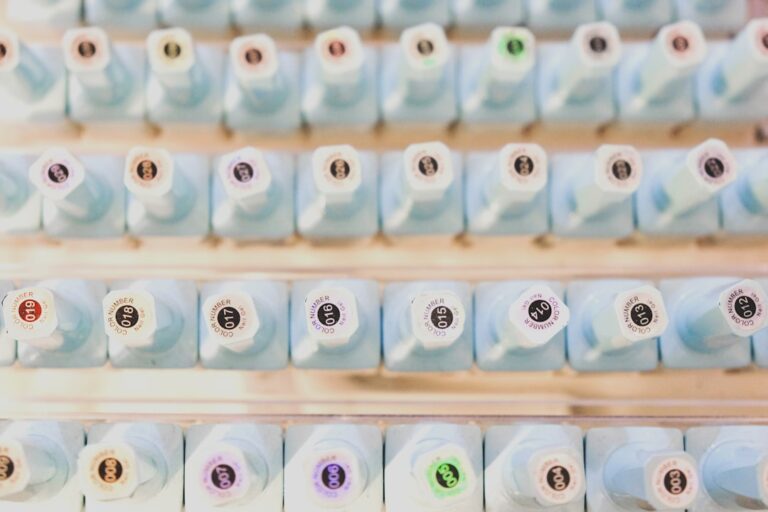Poodles are known for their intelligence, elegance, and hypoallergenic coat. However, many people are surprised to learn that poodles do shed, albeit minimally. Shedding is a natural process for all dogs, including poodles, and it is important for poodle owners to understand the shedding patterns and how to manage them effectively. In this article, we will explore the different types of poodle coats, the factors that affect shedding, and how to manage and groom poodles to minimize shedding. By understanding these aspects of poodle shedding, owners can ensure that their poodles have healthy, beautiful coats while keeping shedding to a minimum.
Key Takeaways
- Poodle shedding varies depending on the type of coat they have
- Factors such as diet, stress, and health can affect the shedding of poodles
- Regular grooming and proper nutrition can help manage poodle shedding
- Different grooming tips can help reduce shedding and keep poodle coats healthy
- Health considerations such as allergies and skin conditions can also impact poodle shedding
Types of Poodle Coats
Poodles come in three different coat types: curly, corded, and straight. The curly coat is the most common and is characterized by tight, dense curls that resemble a lamb’s wool. This type of coat is the most hypoallergenic and sheds the least. The corded coat is a unique and rare type of coat that forms naturally into long, cord-like strands. This type of coat requires special grooming and maintenance to keep the cords clean and healthy. The straight coat is the least common and is characterized by straight, flat hair that lacks the curls of the curly coat. This type of coat sheds more than the curly coat but less than other breeds with double coats. Understanding the different types of poodle coats is important for poodle owners to know how to properly care for and groom their poodles based on their specific coat type.
Factors Affecting Poodle Shedding
Several factors can affect the shedding patterns of poodles, including genetics, diet, health, and environmental factors. Genetics play a significant role in determining a poodle’s shedding patterns, as some poodles may inherit a more hypoallergenic coat while others may shed more. Diet also plays a crucial role in a poodle’s coat health and shedding patterns. A balanced diet rich in essential fatty acids and nutrients can help maintain a healthy coat and minimize shedding. Health issues such as allergies, skin conditions, and hormonal imbalances can also affect shedding in poodles. Environmental factors such as temperature, humidity, and seasonal changes can also impact shedding in poodles. By understanding these factors, poodle owners can take proactive measures to manage shedding effectively.
Managing Poodle Shedding
| Shedding Management Technique | Effectiveness | Time Commitment |
|---|---|---|
| Regular Brushing | High | 15-20 minutes daily |
| Professional Grooming | High | Every 4-6 weeks |
| Quality Diet | Moderate | N/A |
| Supplements | Low | Varies |
Managing shedding in poodles requires a combination of proper grooming, diet, and environmental management. Regular grooming is essential for managing shedding in poodles, as it helps remove loose hair and prevents matting and tangles. Brushing your poodle’s coat at least two to three times a week with a slicker brush or comb can help minimize shedding and keep the coat healthy and shiny. Bathing your poodle with a gentle, hypoallergenic shampoo can also help remove loose hair and keep the coat clean and healthy. In addition to grooming, providing a balanced diet rich in essential fatty acids and nutrients can help maintain a healthy coat and minimize shedding. Environmental management, such as controlling temperature and humidity levels in the home, can also help reduce shedding in poodles. By implementing these strategies, poodle owners can effectively manage shedding and keep their poodles’ coats healthy and beautiful.
Grooming Tips for Poodles
Grooming is an essential part of caring for a poodle’s coat and managing shedding. When grooming a poodle, it is important to use the right tools and techniques to keep the coat healthy and minimize shedding. Regular brushing with a slicker brush or comb is essential for removing loose hair and preventing matting and tangles. It is also important to trim your poodle’s coat regularly to maintain its shape and prevent excessive shedding. When bathing your poodle, use a gentle, hypoallergenic shampoo to keep the coat clean and healthy without stripping its natural oils. It is also important to clean your poodle’s ears regularly to prevent infections and maintain overall hygiene. Additionally, regular dental care is important for maintaining your poodle’s oral health and preventing bad breath and other dental issues. By following these grooming tips, poodle owners can keep their poodles’ coats healthy and minimize shedding.
Health Considerations for Poodles

In addition to grooming and managing shedding, it is important for poodle owners to consider their poodle’s overall health and well-being. Poodles are prone to certain health issues that can affect their coat health and shedding patterns. Allergies, skin conditions, hormonal imbalances, and other health issues can impact shedding in poodles. It is important for poodle owners to monitor their poodle’s health closely and seek veterinary care if they notice any changes in their coat or shedding patterns. Providing a balanced diet rich in essential fatty acids and nutrients can also help maintain a healthy coat and minimize shedding. Regular exercise is important for keeping poodles physically fit and mentally stimulated, which can contribute to overall health and well-being. By prioritizing their poodle’s health, owners can ensure that their poodles have healthy coats and minimal shedding.
Conclusion and Summary
In conclusion, shedding is a natural process for all dogs, including poodles. Understanding the different types of poodle coats, the factors that affect shedding, and how to manage shedding effectively is essential for poodle owners. By implementing proper grooming techniques, providing a balanced diet, managing environmental factors, and prioritizing their poodle’s overall health, owners can minimize shedding and keep their poodles’ coats healthy and beautiful. With proper care and attention, poodle owners can ensure that their poodles have minimal shedding while maintaining their elegance and hypoallergenic qualities.
If you’re interested in learning more about whether poodles shed, you should check out this article on maribethhelen.com. The article provides valuable information on the shedding habits of poodles and offers tips on how to manage their grooming needs. It’s a great resource for poodle owners or anyone considering getting a poodle as a pet.
FAQs
Do poodles shed?
Yes, poodles are considered to be a low-shedding breed. They have hair instead of fur, which means they shed less than other breeds. However, regular grooming is still necessary to prevent matting and keep their coat healthy.
What type of coat do poodles have?
Poodles have a curly, dense, and non-shedding coat. Their hair grows continuously and requires regular grooming to prevent matting and tangling.
How often do poodles need to be groomed?
Poodles should be groomed every 4-6 weeks to keep their coat in good condition. This includes brushing, bathing, and trimming to prevent matting and maintain their curly coat.
Are there different sizes of poodles?
Yes, poodles come in three different sizes: standard, miniature, and toy. Standard poodles are the largest, while toy poodles are the smallest. Each size has the same non-shedding coat.
Are poodles hypoallergenic?
Poodles are often considered hypoallergenic because they shed less and produce less dander than other breeds. However, no dog is completely hypoallergenic, and individual reactions can vary.













+ There are no comments
Add yours